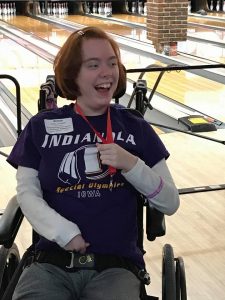We Provide . . .
The Indianola CSD will provide a full continuum of services and placements for eligible individuals from age 3 to 21, including preschool. The Indianola CSD’s continuum of services will include the following placement options:
Service Delivery Models
Consultation:
Indirect services provided by the special education teacher, direct service providers (Occupational Therapist, Physical Therapist, Teacher of the Blind, Teacher of the Deaf and Hard of Hearing and Speech) and general education teacher in adjusting the learning environment or modifying instructional methods using specially designed instruction in the general education setting to meet the individual needs of entitled students. The special education teacher is responsible for monitoring the students’ progress and IEP.
Co-teaching:
Specially designed instruction and content area instruction provided to entitled students by special and general education teachers in partnership to meet course requirements and needs of students in the general education classroom. These services may include: 1) one teach, one observe, 2) one teach, one assist, 3) team teaching, 4) parallel teaching; and 5) station teaching.
Collaboration:
Specially designed instruction provided to an entitled individual student or to a group of entitled students by a special education teacher in general education classroom. These services are provided simultaneously with the general education course requirements.
Pull-Out:
Supplementary services in special education environment providing direct specially designed instruction to an individual student with a disability or a group of students with disabilities by a special education teacher providing supplementary instruction that cannot otherwise be provided in regular education setting. These services are provided in an individual or small group setting for a portion of the day supplementing the general education course requirements. The specially designed instruction provided in this setting is in place of the instruction provided in the general education classroom.
Special Class:
Direct instruction specially designed for an entitled student or a group of entitled students by a special education teacher to provide instruction which is tied to the general education course requirements, but has been modified to meet the needs of the student in self-contained setting; including special schools, home-bound instruction and instruction in hospitals. The student is receiving primary instruction separate from non-disabled peers. The special education teacher and core content teacher will have regular consultation, so the classroom reflects the same course requirements and comparable curriculum.
Special Services:
Direct specially designed instruction provided to an individual student or a group of students with disabilities by a certified special education teacher to provide instruction which is tied to the general education setting (including, but not limited to special schools, home instruction and instruction in hospitals and institutions). This means the student is receiving his/her primary instruction in specific goal areas separate from non-disabled peers. This may require the implementation of reverse consultation between the general education and special education teachers. The special education teacher is responsible for core instruction, curriculum and/or other assistance to the student or group of students. Additionally, the special education teacher is responsible for monitoring the student’s progress according to IEP goals and grading.
Placement vs. Location
It is important to remember these placements are service delivery options as opposed to specific settings, locations or classrooms. Entitled students may receive multiple services in either the general education or special education setting.
All placement decisions will be made by a group of individuals, including parents and other persons knowledgeable about the child (i.e. Heartland AEA 11 personnel), evaluation data and the various placement options. Placement decisions will be made at least annually, and based on the unique needs of the student, as identified in their Individualized Education Program (IEP). Placement decisions will not be based on categorical assumptions or pre-supposed for groups of students with similar needs or characteristics. The reevaluation process will be utilized if the educational or related service needs, including improved academic and functional performance change. Students will be returned to regular education if services are no longer needed.
Unless the student’s IEP dictates otherwise, the student will be served in the neighborhood school they would attend if they were not disabled.
